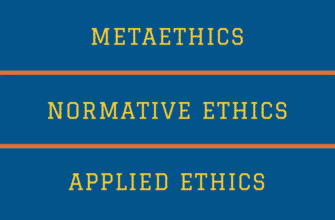As culture settles in as a legitimate business concern in the larger discussion of work management, so do methods for measuring and managing it. Here are five key touchpoints of culture that all businesses from startups to blue chips can use to build employee engagement — and extra profit — from day one.
By Josh Levine and David Kahn Ph.D.
He sat in his office wondering what was wrong. Though far exceeding his financial goals, the company he set out to create was evaporating as it grew in size and staff. Success was causing the problem, but it wasn’t growth that was the issue; it was the engagement of his team.
This scenario, recently experienced by one of our clients, is not uncommon. When businesses scale, operational concerns often take priority over people concerns. When left unchecked, rapid growth begets disengaged workers. The problems mount when leaders realize how difficult it is to hire and retain top talent. (High-performers can smell a poorly managed culture from the front door.) The urge to grow and the focus on culture have an inverse relationship that’s challenging to shift once a company is in the throes of expansion.
Add to the scenario the ever-shortening tenure of employment — soon predicted to average a mere 15 months — and the prospect of building a strong, sustainable culture grows even more grim. Turnover isn’t just a financial burden; it’s a culture roadblock. For the seasoned organization, culture is inextricable from brand — with years of momentum, the regular ebb and flow of employees is less problematic than for startups that have just come into their own.
In the face of business realities and a drastically changing work world, how can businesses scale in size, revenue, and culture? They need a measurable strategy that addresses the core aspects of company culture and adapts to changes over time. We’ve identified five touchpoints — package, potential, people, purpose, and perception — that startups can use today to guide company culture and tomorrow to course-correct.
The 5 Ps
The 5 Ps are a strategic structure that frames the needs of today’s highest performers. Much like Maslow’s hierarchy of needs, the psychological theory that starts at the physiological and ends with self-actualization, each step grows in significance and can only be reached after fulfilling the one below it. But as industries and the working world change, how each company fulfills each step can differ. Together, the five Ps form an adjustable “control panel” that startups can use to build an engaging company culture.
Below is a brief overview of each of the Ps and how a startup is uniquely positioned to provide for employees at each level.
1. Package (“Me Now”)
Package refers to the basic benefits that organizations offer, salary being the first (but not only) item on the list. Insurance, time-off, and bonuses also fit here. The problem startups face is scarcity of capital needed to compete head-on with the big guys. While it’d be nice to provide gold-plated insurance and six-figure salaries to lure over the best talent, it’s not realistic. Deferred payment, flextime and investment opportunities are a few examples of benefits that startups are particularly well-suited to offer.
2. Potential (“Me in the Future”)
Potential refers to personal career growth. According to a 2013 study by Modern Survey, the ability to grow and develop is the number one driver of engagement. This growth can encompass skill development, experience within new roles, or even the promise of a current job being a resume builder for the next. Startups provide a unique environment where a person can attain a vast array of skills because, out of necessity, workers must assume many roles.
3. People (“We Now”)
When it comes to job satisfaction, many studies say who you work with is more important than what you do. Workers are more engaged in their jobs when they like their co-workers. Gallup has repeatedly found that close work friendships boost engagement by at least 50%. The size of startups means individual employees count for more. When bringing on new folks, look first for people who’ll contribute to building a positive culture.
4. Purpose (“We in the Future”)
In the startup world where everything from the code to the CEO will change, the one thing that shouldn’t is an organization’s purpose. Why are we all here? Purpose is the reason an organization is in business beyond making money. According to GP Strategies, a deep-seated belief in a company’s purpose is the main reason engaged people stay on, no matter how else it may change. Individuals not only need to feel like they are doing work that matters, but work that matters to them. In lieu of a hefty paycheck, a startup’s purpose is the best recruitment tool they have and will serve to attract people who are already engaged in what they are trying to accomplish.
5. Perception
Would you recommend working at your company to friends or family? How favorably employees perceive their company is the ultimate sign of engagement. It’s often proof of greater productivity and brand evangelism. In fact, talent placement resource glassdoor.com uses this question as a primary indicator of a great place to work. The best hires usually come from referrals, and the only way your top talent will refer their contacts is if they can honestly recommend working at your startup. Do candidates, employees, and employee alumni feel proud to have contributed their time and energy to your organization? When you meaningfully connect with these people, they become part of your brand’s story, and your company likewise becomes part of them.
—
In a world where the most engaged employees bring in four times more profit than the least engaged, startups have no option but to actively manage culture from the start. For many burgeoning companies, potential and purpose will factor high in the engagement strategy while package and perception scale to size. Holding it all together are the people who make startups possible. While “employee engagement” and “culture” are often viewed en masse, it’s individual employee experiences that create the net results.
Use the five Ps as a gauge for your startup’s culture, but also as a measure of individuals’ experience with your organization. While engaged employees have a positive impact on your bottom line, leveraging individuals’ perception means you’ll have a sustainable network of advocates well beyond your startup days.
This article was originally published on Great-Monday.com with Brand Strategist Josh Levine.






